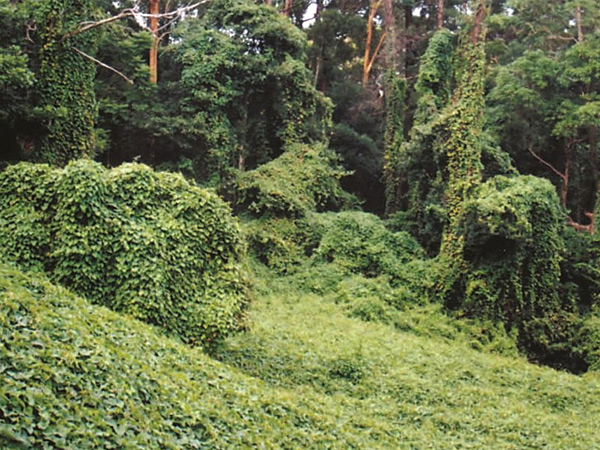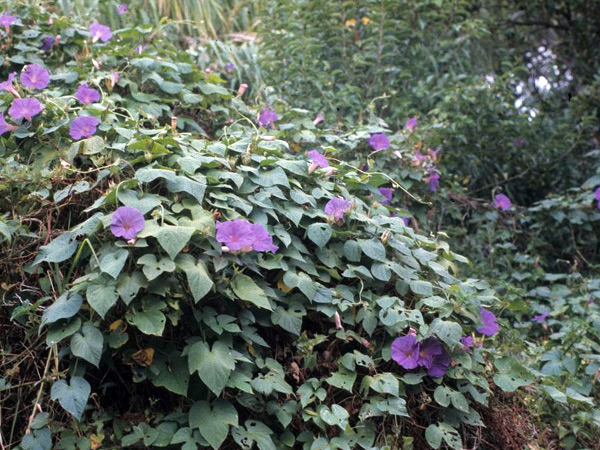Weeds
Purple Morning glory – Ipomoea indica
Purple Morning Glory (Ipomoea indica) is a vigorous, perennial climber. The twining stems are hairy and exude a white sap when cut. The numerous hairy leaves are heart-shaped in outline, 4 to 17 cm long and 3 to 15 mm wide with the blade sometimes divided into 3 to 5 lobes. The leaf stalks 3 to 13 cm long. The flowers have five petals which are fused into a large eye-catching funnel-shaped corolla. The corolla is mostly blue to purple in colour and 6 to 8 cm across. The flowers are grouped together into clusters of 3 to 12. Each cluster is borne on a stalk 2 to 20 cm long arising from the junction of the leaf stalk and the stem. The three-chambered capsules are more or less spherical in shape and about 10 mm in diameter. The hairless seeds are egg-shaped, 4 to 5 mm diameter and have a warty surface. Purple Morning Glory rarely sets fruit and seed in Australia (Johnson 1992; Green 1994; Big Scrub Rainforest Landcare Group 2000; Land Protection 2006; Thorp & Wilson 2007).
For further information and assistance with identification of Purple Morning Glory contact the herbarium in your state or territory.
Profile
How does this weed affect you?
Purple morning glory, native to South America, is a vigorous perennial climber that can form either a dense ground cover or climb high into the canopy smothering native vegetation.
Purple morning glory reportedly grows in a wide variety of soils and situations. However, it prefers moist areas – particularly nutrient rich sites. It is commonly recorded in urban areas, wasteland, along roadsides and on rainforest margins.
It was widely cultivated as a garden ornamental and has become naturalised in many coastal areas.
Toxicity
Purple morning glory is toxic to humans, causing discomfort and irritation but is not life-threatening. The seeds are poisonous if ingested, causing visual distortion, restlessness and nausea.
What to do if poisoning occurs:
- If the patient is unconscious, unresponsive or having difficulty breathing dial 000 or get to the emergency section of a hospital immediately.
- If the patient is conscious and responsive call the Poisons Information Centre on 13 11 26 or your doctor.
- If going to a hospital take a piece of the plant for identification.
References
http://www.environment.gov.au/cgi-bin/biodiversity/invasive/weeds/weeddetails.pl?taxon_id=13916
Control
Purple Morning Glory can be manually removed by pulling up the roots and mulching heavily to discourage regrowth (Land Protection 2006). Herbicides applied as a foliar sprayed can be effective in areas where Purple Morning Glory forms and dense groundcover. Stems of individual vines can be scraped and painted with herbicide (Big Scrub Rainforest Landcare Group 2000).
Please see the Australian Pesticides and Veterinary Medicines Authority for chemical information http://www.apvma.gov.au


